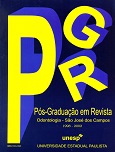Determinação das posições dos dentes artificiais anteriores inferiores em próteses totais bi-maxilares
DOI:
https://doi.org/10.14295/bds.2001.v4i2.117Abstract
Objetivando auxiliar na determinação do relacionamento esquelético maxilo mandibular no plano horizontal e da crista óssea original do rebordo alveolar inferior anterior, em pacientes edentados totais bi-maxilares, apresenta-se um método radiográfico baseado em traçados cefalométricos. A amostra foi composta por 64 pacientes do ambulatório de prótese total da Universidade de Santo Amaro. Para estes pacientes foram confeccionadas próteses totais e tomadas duas telerradiografias, uma em posição de repouso mandibular e outra em oclusão. Para a evidenciação radiográfica, foram montados, nos planos de oclusão duplicados dos originais, os incisivos centrais superior e inferior direito e introduziu-se em seus longos eixos, um fio ortodôntico de 0,5mm de espessura. Na radiografia em posição de oclusão, foram feitos traçados cefalométricos que permitiram diagnosticar o relacionamento maxilo mandibular e a posição da crista óssea original. Comparando-se esse diagnóstico com o clínico, pôde-se notar diferenças em 11 casos, quanto ao relacionamento maxilo mandibular e 23, quanto à posição dos dentes sobre a crista óssea. Desses 23 casos (35,93% da amostra), 18 (28,12%), tiveram discrepância na montagem dos dentes para posterior e 5 (7,81%), para anterior. Esses resultados indicam a necessidade de mais estudos sobre métodos de diagnóstico, para minimizar as possibilidades de erros.
Downloads
Downloads
Published
How to Cite
Issue
Section
License
Brazilian Dental Science uses the Creative Commons (CC-BY 4.0) license, thus preserving the integrity of articles in an open access environment. The journal allows the author to retain publishing rights without restrictions.
=================




























